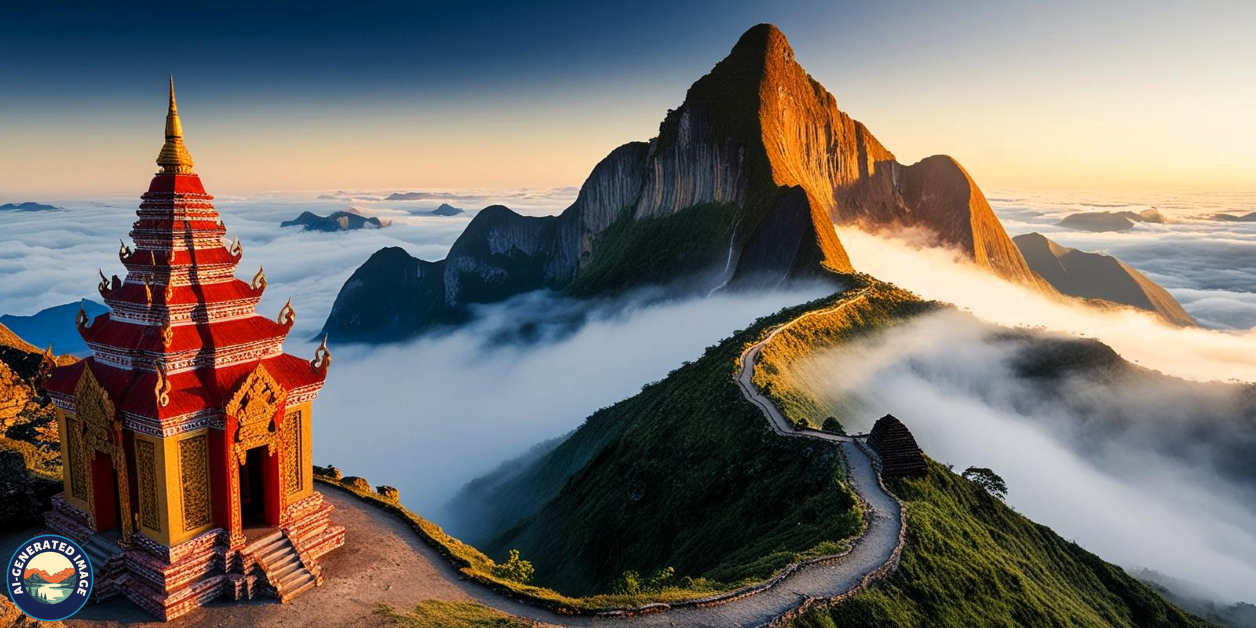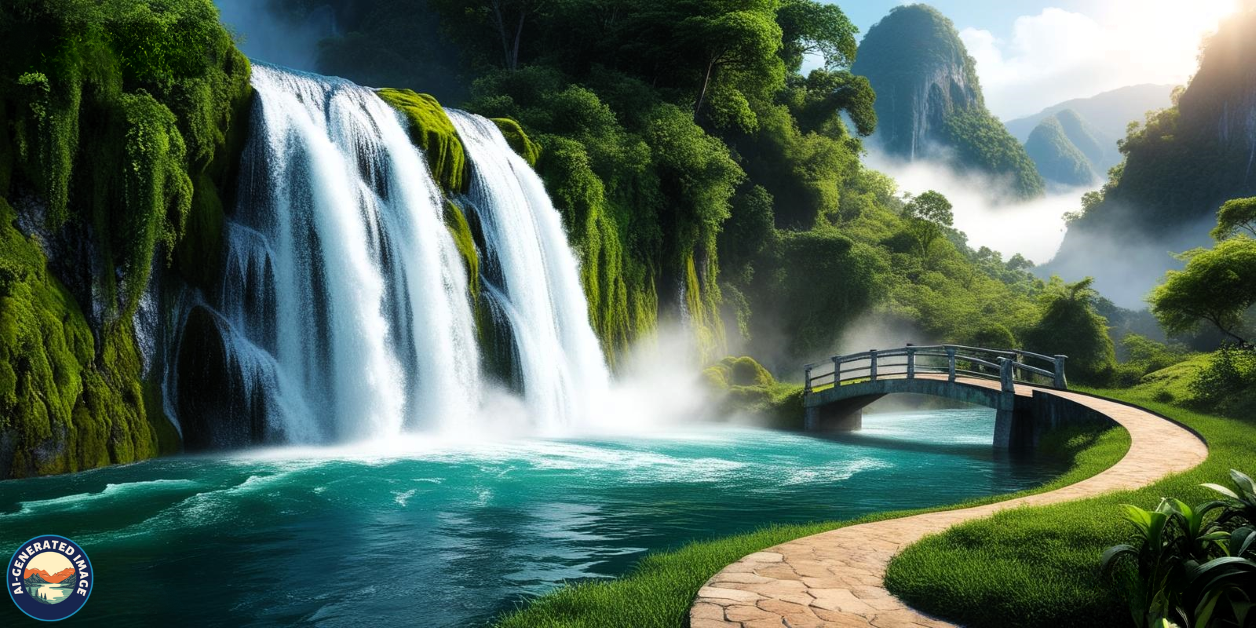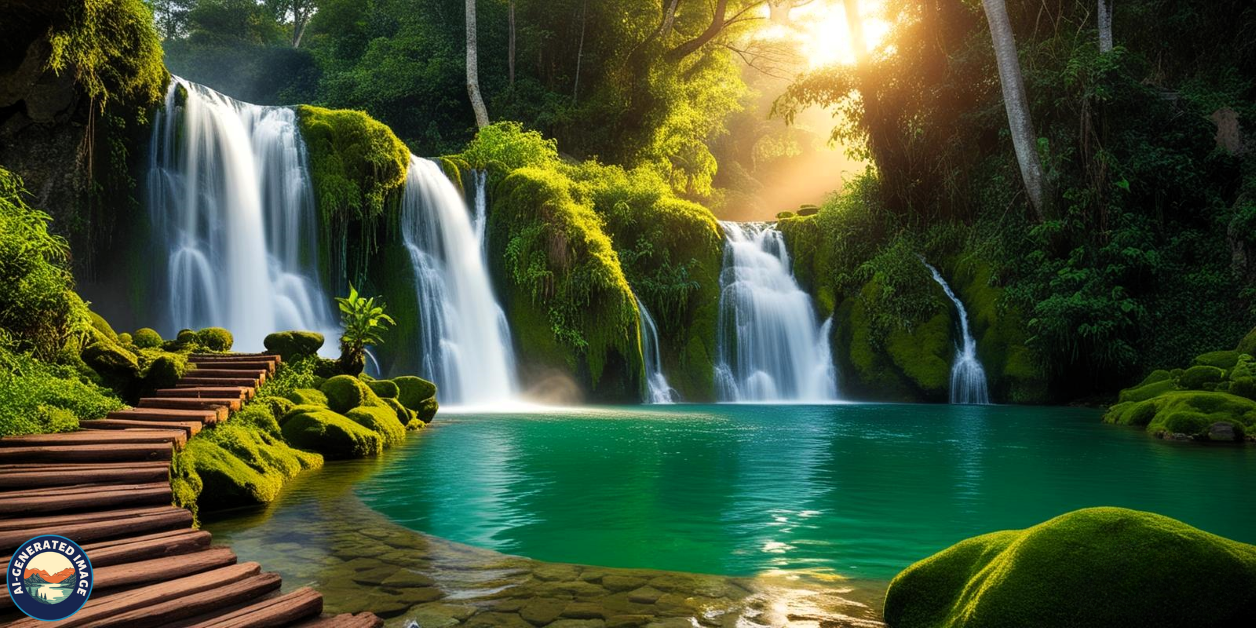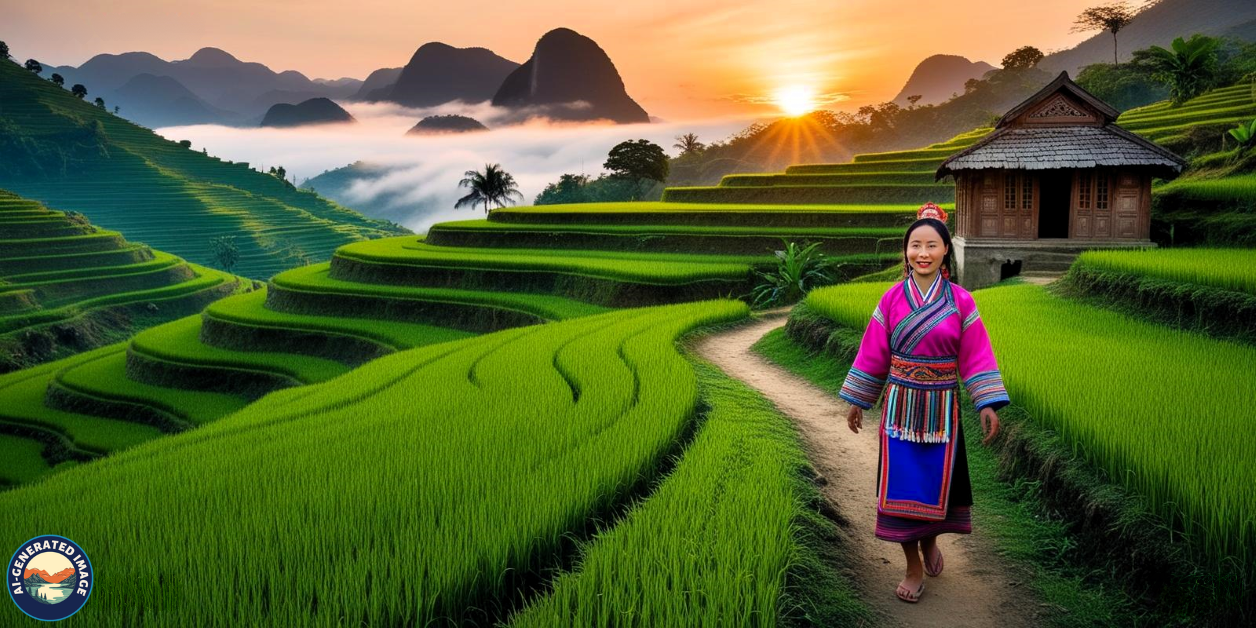Introduction
Nestled in the misty mountains of northern Vietnam, Sapa is a paradise for travelers. Known for its mesmerizing rice terraces, vibrant ethnic cultures, and adventure-filled landscapes, Sapa blends nature and tradition seamlessly. Whether you seek adventure, scenic beauty, or a peaceful retreat, Sapa promises an unforgettable experience.
The Breathtaking Landscape of Sapa
Magnificent Rice Terraces
Exploring Muong Hoa Valley
Muong Hoa Valley is home to some of the most spectacular rice terraces in Vietnam. These terraces, carefully cultivated by local ethnic groups, offer an ever-changing palette of green and gold throughout the year.
Best Time to Witness the Golden Fields
The best time to witness the breathtaking golden rice fields is from September to early October. During this period, the landscape is at its most picturesque, drawing nature lovers and photographers alike.
Majestic Peaks and Scenic Views
Fansipan – The Highest Peak in Indochina
Standing at 3,147 meters, Fansipan is the tallest mountain in Indochina. Whether you opt for a challenging trek or take a scenic cable car ride, the views from the top are simply awe-inspiring.

Ways to Reach the Summit (Trekking vs. Cable Car)
-
Trekking
Ideal for adventure seekers, taking 2-3 days to complete.
-
Cable Car
A more convenient option, reaching the peak in 15 minutes.
Enchanting Waterfalls
Silver Waterfall and Love Waterfall
Sapa is blessed with stunning waterfalls, the most famous being Silver Waterfall and Love Waterfall. These cascading beauties offer a peaceful escape into nature.
Silver Waterfall

Love Waterfall

Best Time to Visit These Natural Wonders
The waterfalls are most spectacular during the rainy season (May to September) when the water flow is at its peak.
Cultural Richness and Ethnic Diversity
The Hmong and Dao Communities
Unique Traditions and Way of Life
Sapa is home to several ethnic communities, including the Black Hmong and Red Dao. Their rich traditions, distinct clothing, and warm hospitality make visiting their villages a unique cultural experience.
Handcrafted Textiles and Souvenirs
Local artisans produce beautiful textiles, embroidery, and silver jewelry, making perfect souvenirs to take home.
Sapa’s Vibrant Weekly Markets
Bac Ha Market – A Cultural Treasure
Bac Ha Market is held every Sunday. It is a lively gathering where ethnic groups trade goods, food, and handmade crafts.
Taste Local Delicacies and Find Unique Handicrafts
From traditional dishes to handmade souvenirs, Sapa’s markets are a feast for the palate and the eyes.
Thrilling Outdoor Activities
Trekking Through Stunning Landscapes
Popular Trails for Beginners and Experts
-
Easy Trails
Cat Cat Village, Lao Chai, and Ta Van.
-
Advanced Trails
Fansipan trek, Tram Ton Pass.
Essential Packing Tips for Trekking
- Sturdy hiking shoes
- Lightweight, weather-appropriate clothing
- Water and snacks
- Camera to capture the breathtaking scenery
Exploring by Bike and Motorbike
Best Routes for a Scenic Ride
For those who love adventure, exploring Sapa’s winding roads on a bike is a must. Popular routes include O Quy Ho Pass and Tram Ton Pass.
Motorbike Rentals in Sapa
Motorbikes are available for rent, but travelers should ensure they have a valid license and wear safety gear.
Homestay Experiences for Cultural Immersion
Living with Local Families
Homestays offer an opportunity to experience the daily life of ethnic communities while enjoying home-cooked meals.
How to Book an Authentic Homestay
Many homestays can be booked online or through local guides, ensuring an enriching experience.
Best Seasons to Visit
Spring (March-May) and Autumn (September-November)
Perfect Weather for Trekking
These seasons offer mild temperatures and clear skies, ideal for outdoor exploration.
The Beauty of Sapa’s Seasonal Changes
Spring brings cherry blossoms, while autumn transforms the landscape into a golden wonderland.
Winter (December-February)
Witness Snow in Vietnam
Sapa is one of the few places in Vietnam where snowfall occurs, creating a magical winter wonderland.
Packing for Cold Weather
Bring warm clothing, gloves, and a quality jacket to stay comfortable in chilly temperatures.
How to Reach
Travel Options from Hanoi
Choosing the Best Transport Mode
-
Train
An overnight train to Lao Cai, followed by a bus to Sapa.
-
Bus
A direct and affordable option takes around 5-6 hours.
-
Private Car
The most comfortable but expensive choice.
Pros and Cons of Each Option
-
Train
Comfortable but requires a transfer.
-
Bus
Budget-friendly but bumpy roads.
-
Private Car
Convenient but costly.
Delicious Local Cuisine
Must-Try Dishes
Thang Co – A Traditional Specialty
A unique dish made from horse meat, often enjoyed at local markets.
Grilled Delights and Fresh Mountain Produce
Sapa’s cool climate enhances the flavors of grilled meats and fresh vegetables, making them a must-try.
Essential Travel Tips
Packing Guide for Sapa
Clothing and Gear Recommendations
Layered clothing, sturdy shoes, and rain gear are essential for a comfortable trip.
Preparing for Unpredictable Weather
Pack both warm and light clothing, as temperatures can fluctuate quickly.
Practicing Responsible Tourism
Supporting Local Communities
Buy directly from artisans and opt for community-based tourism to ensure fair earnings for locals.
Eco-Friendly Travel Habits
Minimize plastic waste and respect nature by following sustainable travel practices.
Conclusion
Sapa is a captivating destination that combines breathtaking landscapes, rich culture, and thrilling outdoor adventures. Whether you’re trekking, immersing yourself in local traditions, or simply enjoying the scenery, Sapa promises an unforgettable journey. Make sure to put Sapa on your Vietnam travel bucket list!
FAQs
What is the best way to travel from Hanoi to Sapa?
It depends on your preference—trains are comfortable, buses are budget-friendly, and private cars offer convenience.
Is Sapa safe for solo travelers?
Yes, Sapa is generally safe, but solo travelers should exercise caution, especially when trekking alone.
How many days are ideal for a Sapa trip?
A 3-day trip is ideal for experiencing Sapa’s landscapes, culture, and activities.
Can I explore Sapa without trekking?
Yes! You can enjoy Sapa through cable cars, motorbike rides, and guided tours.
Is a trekking guide necessary in Sapa?
A guide is optional for easy trails but recommended for exploring remote areas

